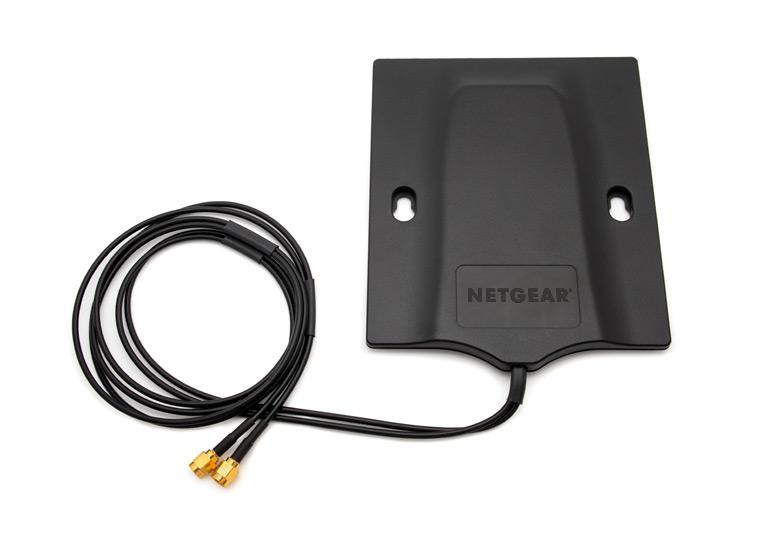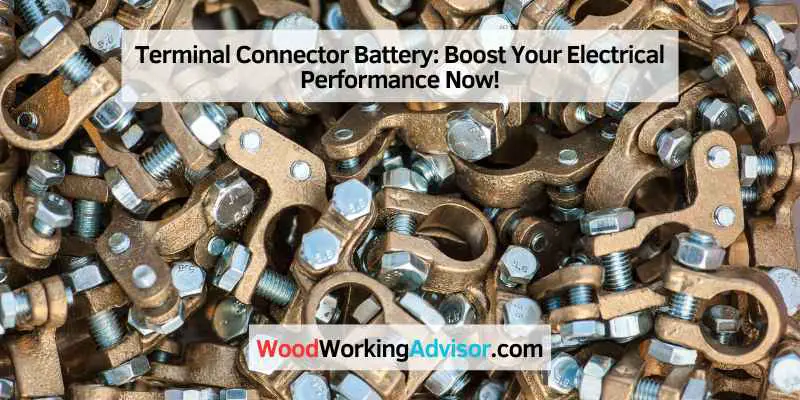A terminal connector in a battery allows electrical flow and connection between the battery and external devices. It plays a crucial role in powering various equipment.
Battery terminal connectors are essential components that help establish a connection between the battery and external devices or systems. They facilitate the flow of electrical energy which powers different equipment, making them vital for proper functioning. By ensuring a secure and stable connection, terminal connectors help optimize the performance and longevity of batteries, serving as key components in electrical systems.

Credit: www.netgear.com
The Importance Of Terminal Connectors
The Role Of Terminal Connectors
Terminal connectors ensure a secure electrical connection.
They serve as a bridge between the battery and the device, facilitating efficient power transmission.
Benefits Of Using Terminal Connectors
- Improved Safety: Prevents loose connections or accidental short circuits.
- Ease of Installation: Simplifies the battery connection process.
- Enhanced Durability: Resistant to corrosion and vibration.
- Efficient Power Transfer: Minimizes energy loss for optimal performance.
Types Of Terminal Connectors
When it comes to battery connections, different types of terminal connectors play a crucial role in ensuring a secure and reliable connection. Understanding the various types of terminal connectors, such as Ring Terminals, Spade Terminals, and Bullet Terminals, can help you choose the right one for your specific needs.
Ring Terminals
Ring terminals are circular connectors with a hole in the middle, resembling a ring. They are commonly used for securing wire connections to bolts or studs on a terminal block or electrical equipment.
Spade Terminals
Spade terminals, also known as fork terminals, have a flat, tongue-like shape that allows for quick and easy connection and disconnection. They are ideal for applications where frequent changes are required.
Bullet Terminals
Bullet terminals feature a cylindrical shape with a male or female end, designed to securely connect wires without the need for soldering. They are commonly used in automotive and marine applications for quick and reliable connections.
Selecting The Right Terminal Connector
When it comes to selecting the right terminal connector for your battery, there are several important factors to consider. Understanding wire gauge and environmental factors are crucial in ensuring you choose the right connector for your specific needs.
Understanding Wire Gauge
Wire gauge refers to the diameter of the wire used in the terminal connector. Choosing the right wire gauge is essential for ensuring a secure and efficient connection. Using a wire that is too small can result in overheating and potential damage to the battery, while using a wire that is too large may not fit properly in the connector. Matching the wire gauge to the connector is critical to ensure a secure and reliable connection.
Consideration Of Environmental Factors
When selecting a terminal connector for your battery, consideration of environmental factors is important. If the battery will be exposed to extreme temperatures or harsh conditions, choosing a connector that is resistant to corrosion and environmental wear and tear is essential. Connector materials and coatings play a significant role in protecting the battery connection from environmental damage.
Proper Installation And Maintenance
Installing and maintaining your terminal connector battery properly is crucial for ensuring optimal performance and longevity. By following the correct installation steps and adhering to maintenance best practices, you can avoid potential issues and maximize the lifespan of your battery.
Installation Steps
- Ensure safety precautions are taken and that the power supply is disconnected before attempting installation.
- Clean the terminal connectors and battery terminals to remove any dirt, corrosion, or residue.
- Inspect the battery for any visible damages or leaks that could affect its performance. Replace any damaged components.
- Position the battery correctly, ensuring the positive and negative terminals align with the corresponding connectors.
- Tighten the terminal connectors securely, but avoid over-tightening to prevent damage.
- Apply a thin layer of protective grease to the connectors to guard against corrosion.
- Reconnect the power supply and verify that the battery is functioning correctly.
Maintenance Best Practices
To ensure your terminal connector battery operates at its best, here are some maintenance best practices to follow:
- Regularly inspect the battery for any signs of damage, leakage, or loose connections. Address any issues promptly.
- Keep the battery and its surrounding area clean and free from debris to prevent contamination or short-circuits.
- Check the battery terminals and connectors for tightness periodically, ensuring they remain securely fastened.
- Monitor the battery’s performance and voltage regularly. If there are any significant fluctuations, have it tested by a professional.
- Keep the battery charged to the manufacturer’s recommended level, as overcharging or undercharging can decrease its lifespan.
- Avoid exposure to extreme temperatures that can impact the battery’s performance. Store it in a cool, dry location.
Troubleshooting Terminal Connector Issues
Having trouble with your terminal connector battery? Don’t fret, we’re here to help! In this section, we will guide you through the common problems you should look out for and provide you with step-by-step instructions on resolving those connection issues.
Strongcommon Problems To Look For/strong
Before diving into the troubleshooting steps, let’s identify the common problems that you may encounter with your terminal connector battery:
- Loose connections: Sometimes, the terminal connectors may not be securely attached to the battery, resulting in poor electrical contact.
- Corrosion: Over time, the connectors can become corroded, hindering the flow of electricity.
- Broken or damaged connectors: Physical damage can occur to the connectors, rendering them ineffective.
- Incompatible connectors: Using incorrect connectors that do not match the battery terminals can lead to connection problems.
To effectively troubleshoot these issues, it is important to observe and identify any of the above problems before proceeding with the resolution steps.
Strongsteps To Resolve Connection Problems/strong
Now that you are aware of the common problems, let’s move on to the step-by-step process of addressing these connection issues:
- Check and tighten the connections: Inspect the terminal connectors and ensure they are tightly secured to the battery terminals. Use a suitable tool, such as a wrench or pliers, if necessary.
- Clean the connectors: If corrosion is present, gently clean the connectors using a wire brush or a combination of baking soda and water. Be sure to remove any residue and rinse thoroughly.
- Replace damaged connectors: In cases where the connectors are broken or damaged, it is advisable to replace them with new ones that are compatible with your battery.
- Match the connectors: Double-check that you are using the correct terminals for your battery. Ensure the connectors are specifically designed to fit and establish a proper connection.
By following these steps, you should be able to troubleshoot and resolve any terminal connector issues with your battery. Remember to always take necessary safety precautions and refer to the manufacturer’s guidelines for specific instructions pertaining to your battery model.

Credit: www.scottrobinsonhonda.com
Frequently Asked Questions For Terminal Connector Battery
What Is A Terminal Connector Battery?
A terminal connector battery is a device used to connect the battery terminals to the electrical system of a vehicle or equipment. It allows for the transfer of electrical energy between the battery and the system, ensuring proper functioning and power distribution.
How Does A Terminal Connector Battery Work?
A terminal connector battery works by providing a secure connection between the battery terminals and the electrical system. It has metal terminals that are designed to fit securely onto the battery terminals, creating a conductive pathway for the flow of electrical energy.
This allows the battery to power the electrical components of the vehicle or equipment.
Why Is A Terminal Connector Battery Important?
A terminal connector battery is important because it ensures the efficient and reliable transfer of electrical energy between the battery and the electrical system. It helps maintain a strong connection, preventing power loss, voltage drops, and electrical issues. A secure connection also reduces the risk of damage to the battery and system components.
How Do I Choose The Right Terminal Connector Battery?
To choose the right terminal connector battery, consider the battery type, size, terminal size, and electrical requirements of your vehicle or equipment. It’s essential to ensure compatibility between the battery and the terminal connectors, ensuring a proper fit and secure connection.
Consult the manufacturer’s specifications or seek professional advice if unsure.
Conclusion
Choosing the right terminal connector for your battery is crucial for optimal performance. Whether it’s for automotive, industrial, or home use, the right terminal connector can make a significant difference in the battery’s efficiency and longevity. Remember to consider factors such as material, size, and compatibility to ensure a stable and reliable connection.
Your battery’s performance depends on it.


